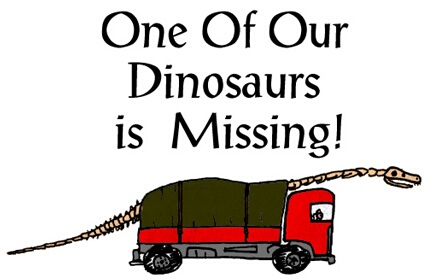


www.dinosauricon.com
www.dinosaur-farm.co.uk
www.bbc.co.uk/dinosaurs
www.nhm.ac.uk
www.geocities.com/dinobiscuits/db.html
| Dinosaurs of the Isle of Wight | ||||||||||||||||||||||||||||||||||||||||||||||
 |
 |
|||||||||||||||||||||||||||||||||||||||||||||
| The Isle of Wight is a veritable goldmine when it comes to Dinosaurs, with a high discovery rate and many species being exclusive to the island. In fact, the Island is considered to be the Dinosaur capital of Europe! Individual petrified dinosaur bones are being washed out of the slippery mud flows and crumbly cliffs in large quantities, but the vast majority are washed out to sea or ground down to pebbles. Complete skeletons are much more of a rarity, yet on average a nearly whole dinosaur will reappear every few years. In the last ten years alone three important, near-complete skeletons have been collected. | ||||||||||||||||||||||||||||||||||||||||||||||
| The commonest and best known of all the island dinosaurs is Iguanodon. This creature usually walked on all fours, but would occasionally rear up onto it's hind legs, demonstrating facultive bipedalism. It's most distinctive feature was a spike on each thumb. Iguanodon stood about 5 metres high and was 10 metres long from tip to tail. Fossilized bones of this creature are turning up on island beaches almost daily, but it is much harder to find a good example of the leaf-like teeth which resemble those of a modern Iguana . As many as three hundred Iguanodon skeletons have fallen out of the Island's cliffs since records began, which is hardly surprising when you consider that they must have lived in huge herds. | ||||||||||||||||||||||||||||||||||||||||||||||
| Another well known early Isle of Wight resident was Hypsilophodon, which looked something like a smaller version of Iguanodon. About thirty complete skeletons have been found of this two legged, fast running vegetarian, and they are all animals about two metres long. | ||||||||||||||||||||||||||||||||||||||||||||||
| The Isle of Wight also had an armoured dinosaur called Polacanthus, with spines and a thick defensive shield over the hips. There have only been three good Polacanthus skeletons ever found, the best being unearthed in 1994. Unfortunately, none of these Polacanthus has a head so we can only guess that the skull was small and bony enough to protect the brain, as in other nodosaurs. | ||||||||||||||||||||||||||||||||||||||||||||||
| In 1992 a Brachiosaur was discovered on the island, and was pieced together to make about 30 per cent of a skeleton. This discovery may help to make sense of the countless bits and pieces of sauropod dinosaurs which have been found here over the years. All we can say at the moment is that there definitely were creatures like Brachiosaurus and Diplodocus on the Isle of Wight although what species they belong to is unknown. | ||||||||||||||||||||||||||||||||||||||||||||||
| When you mention dinosaurs to most people they invariably think of the famous Tyrannosaurus rex. Sadly, Tyrannosaurus was not present on the Island, as during the Maastrichtian age of the Cretaceous period the island was under water, but there were some inpressive individuals. As well as Baryonyx, which is known from a few disarticulated fragments, there is Neovenator, the only known European allosaurid, and one of Tyrannosaurus's ancestors, Eotyrannus. | ||||||||||||||||||||||||||||||||||||||||||||||
 |
||||||||||||||||||||||||||||||||||||||||||||||
| The geology of the Isle of Wight, with the dinosaur-bearing rocks shown in pink. (Copyright BGS) | ||||||||||||||||||||||||||||||||||||||||||||||
| A little bit of information about the rocks and fossils of the Island | ||||||||||||||||||||||||||||||||||||||||||||||
| The Dinosaurs | ||||||||||||||||||||||||||||||||||||||||||||||
| Iguanodon | Hypsilophodon | Polacanthus | ||||||||||||||||||||||||||||||||||||||||||||
| Baryonyx | ||||||||||||||||||||||||||||||||||||||||||||||
| Yaverlandia | ||||||||||||||||||||||||||||||||||||||||||||||
| Neovenator | ||||||||||||||||||||||||||||||||||||||||||||||
| Eotyrannus | ||||||||||||||||||||||||||||||||||||||||||||||
| If you want some more information, why not try these sites: | ||||||||||||||||||||||||||||||||||||||||||||||
| The Dinosauricon- This site has a full Genera list and is very up-to-date. Also an excellent gallery of Palaeoart www.dinosauricon.com |
||||||||||||||||||||||||||||||||||||||||||||||
| Dinosaur Farm- the website isn't up-and-running yet, but the actual museum is very good, and there are people there who will answer any questions you may have www.dinosaur-farm.co.uk |
||||||||||||||||||||||||||||||||||||||||||||||
| BBC Walking with Dinosaurs- a good website, with information on the recent Live from Dinosaur Isle dig. www.bbc.co.uk/dinosaurs |
||||||||||||||||||||||||||||||||||||||||||||||
| The Natural History Museum, London- The dinosaur section is not complete, but then this is THE museum for Dinosaurs, so it has to be here! www.nhm.ac.uk |
||||||||||||||||||||||||||||||||||||||||||||||
| Dinosaur and Biscuits- not a serious site, but a lot of fun if you are bored and have an unusual interest in the whole dinosaur/biscuit connection www.geocities.com/dinobiscuits/db.html |
||||||||||||||||||||||||||||||||||||||||||||||
| Sign GuestbookView Guestbook | ||||||||||||||||||||||||||||||||||||||||||||||